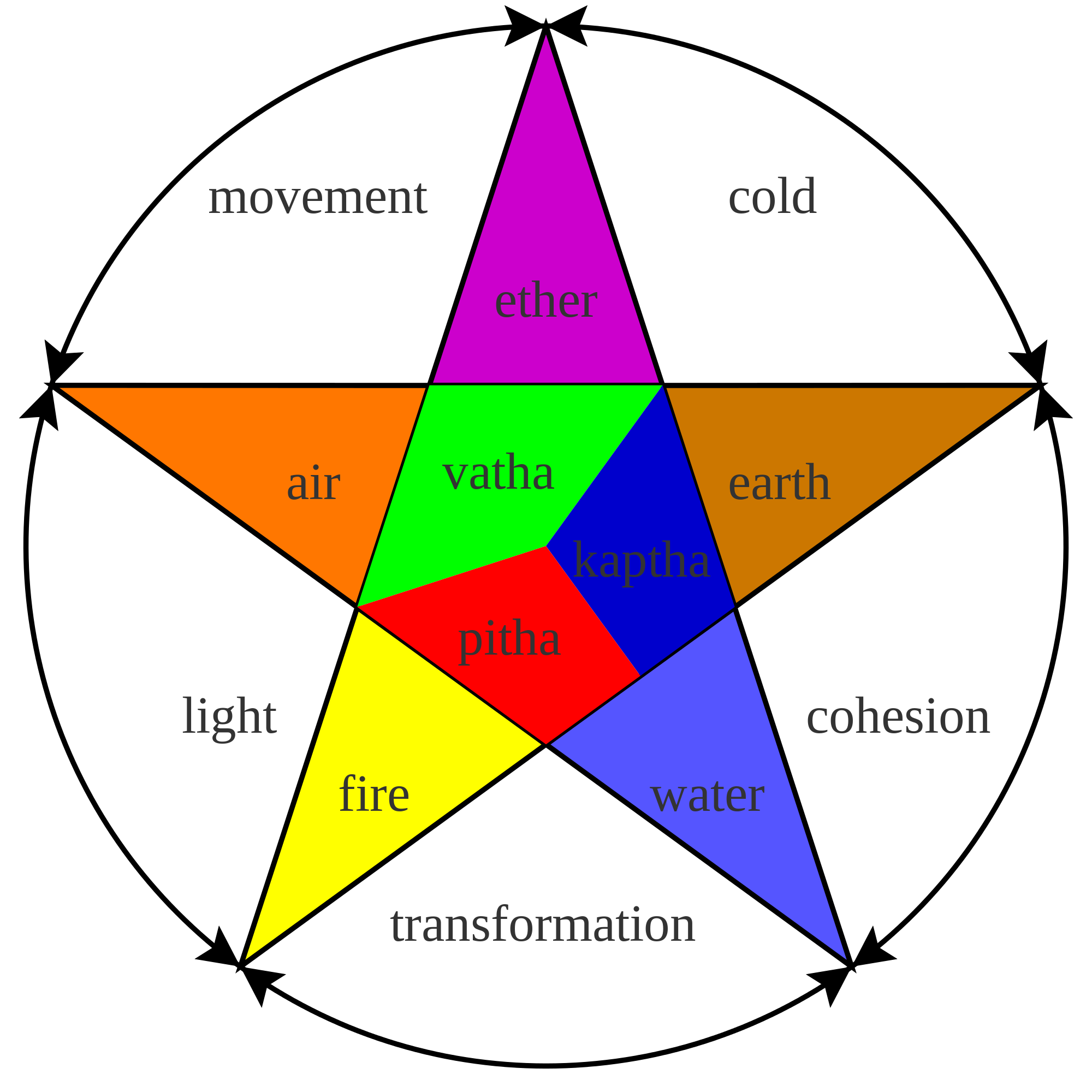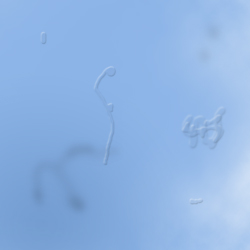Triphala Ghrita- Introduction to Ayurvedic Methods for Eyes
In the modern age, it is easy to be arrogant about all the benefits western medicine has brought into our lives. This arrogance is not completely unwarranted. With long life expectancy, incredible sanitation/hygiene, and cures for more diseases than ever before in history, western medicine has proven that it has the best interests of humanity at heart.
The problem appears, however, when we only give credit to western medicine and ignore other, quite real and valid alternatives to it. These alternatives are usually in the form of traditional or herbal medicine.
Although western medicine does not actively dismiss these methods (at least not usually) and even goes as far as to sometimes recommend herbal medicine, it is nevertheless skeptical towards anything that is not sold at a pharmacy. Thus, it is easy to remain ignorant of the wide range of traditional and exotic remedies which can be more than useful in the way they approach and alleviate illness.
One such traditional way is Ayurvedic medicine. In this article, we will talk about a particular form of Ayurvedic medicine called Triphala ghrita. First, however, it is important to give a general overview of what Ayurvedic medicine is so that you can place this remedy in a wider context.
What is Ayurveda?
Ayurvedic medicine is arguably one of the oldest holistic health systems ever developed. It is some 3000 years old and it is quite unique in its approach.
There are several reasons why an Ayurvedic approach might be strange for a western medicine enthusiast. For starters, Ayurvedic medicine is holistic rather than fragmentary and divisive. What does this mean? It means that it focuses on all aspects of the body, mind, and soul/spirit. While standard western medicine mostly believes only in treating the body and its symptoms, Ayurveda recognizes that illnesses are often caused by an imbalance in all three of these categories, not just the body.
Therefore, an Ayurveda practitioner is someone who can examine your entire being from body to mind to soul, and tailor the medicine to your specific needs. The result is a treatment which is personalized rather than generalized.
Another big difference between Ayurveda and western medicine is that it tends to focus more on promoting good health rather than treating diseases. In this sense, it can be compared more accurately to a form of wellness than strictly a medicine. That said, there are plenty of Ayurvedic recipes and methods which focus on treating illnesses, one of which we will mention later as the focus of this article.
However, Ayurveda in its essence is not the polar opposite or the enemy of western medicine. Rather, it is more of a complementary idea to the work that western medicine is already doing amazingly (namely, treating illnesses of the body).
Ayurveda understands that the human body is inseparably tied to its environment and that within the body-mind-soul complex there can be many imbalances which often lead to illnesses and disorders.
A lot of Ayurvedic recipes are “cleansing” solutions which “purify” the patient’s blood and digestive systems, for example, clearing out the organism so that illnesses cannot take root.
A basic tenet of Ayurveda is that the human body is composed of five elements which can also be found in the world. These elements are space, air, fire, water, and earth. As long as these elements remain in balance within the human body, everything is usually fine. However, as soon as one of them either becomes deficient or overly-sufficient, that is when problems can start to arise. If this is starting to remind you of the four humors system that the Ancient Greeks and Medieval Europeans practiced then you are not far from the truth. Albeit, this is a much more advanced version of that, less naive and more accurate.
These then combine to form three different life energies in the human body called doshas: the Vata dosha, Pitta dosha, and Kapha dosha.

The Three Doshas
The Vata dosha is believed to be the most powerful of the three as it controls the most basic of body functions such as cell division, breathing, blood flow, the mind, heart function, and the ability to get rid of waste through your intestines. It is disrupted when eating too soon after a meal, by fear, grief, or staying up too late. If it is your main life force, then you are more likely to develop conditions like asthma, heart disease, anxiety, skin problems, and rheumatoid arthritis.
The Pitta dosha controls your metabolism, digestion, and hormones linked to appetite. It is disrupted by eating sour or spicy foods and spending too much time in the sun. If pitta dosha is your main life force, then you are more likely to develop conditions like Chron’s disease, heart disease, high blood pressure, and infections.
Finally, the Kapha dosha controls body strength, stability, weight, muscle growth, and the immune system. It is disrupted by sleeping during the day, eating too many sweets or eating/drinking things which contain an overabundance of salt and water. If it is your main life energy, then you are more likely to develop asthma (breathing disorders in general), cancer, diabetes, nausea after meals, and obesity.
So there you have it. This is a basic overview of Ayurvedic medicine and the philosophy behind it. Now that you have a better understanding of the wider context, it will be easier for you to grasp some of the terminologies what we will use when talking about Triphala ghrita.
Generally, Ayurvedic medicine is based around keeping the three doshas in order and making sure neither of them get out of balance. However, if one of the does end up becoming your main life force then Ayurveda also offers you ways in how to get your organism back in order.
Triphala ghrita is one such medicine. It can help you both keep your doshas balanced and maintain your healthy body-mind-soul, but also can help treat some defects that might arise as a result of injury or lifestyle.
Without further ado, let us move on to the part of the article which talks in-depth about Triphala ghrita and the ways in which is it prepared, taken, and the effects that it has.
Triphala Ghrita
The Triphala ghrita is a form of Ayurvedic medicine which is prepared with a ghee base. A ghee is a form of butter made according to Indian tradition. The Triphala consists of a group of three fruits: Haritaki, Vibhitaki and Amla and can be used for medicine as well as Panchakarma. It is generally used for eye treatment, but as we will soon see it can beused for a variety of different treatments including some digestive system applications.

It can also be used for the treatment of tumors, early stage of cataract, erysipelas, excessive discharge in women, eye pain with itching and discharge, cough, oedema, hair fall, intermittent fever, pterygium and other eye and eyelid related diseases, constipation, IBS – C and low digestion strength, myopia, hypermetropia, astigmatism, macular degeneration of the eye.
As we can see, the Triphala ghrita can be used as a remedy for a wide range of conditions. This is one of the trademarks of a lot of Ayurvedic medicine. Because it is essentially tailored to address an overabundance of a particular energy in the body, it can be useful for a wide range of illnesses related to that imbalance. This is radically different from the quite concentrated, sniper-like approach of some western medicine.
The particular doshas that it calms down are the pitta and vata dosha.
The great thing about Triphala ghrita is that it can be both applied externally or taken orally depending on the disease which further increases its flexibility. If you are taking it orally, then take a quarter to half teaspoon with water before food once or twice a day. Depending on the quality and flavor of your symptoms, your Ayurvedic doctor may direct you otherwise. If you are preparing Panchakarma, then you will be using the Shehana procedure and the dose will more heavily depend on the severity of the illness and the Ayurvedic doctor’s judgment. It may be taken by itself or you can mix it with Triphala choornam. If used externally, then it will most likely be in an eye procedure called Tarpana.
Tarpana is a form of eye care therapy. It is performed by making a compound around both eyes with the help of black gram paste. Melted Triphala ghrita is retained in the compound for a few minutes during which the patient’s eyes are immersed in the ghee medium. Finally, the patient is asked to blink and open their eyes so that the herbal ghee components can enter deep into the eyes and provide a therapeutic effect.
This can also be used for dry eyes in the form of drops. Generally, it is recommended to take two drops on the eyes for one or two weeks in order to soothe and moisturize the eyes, relieving irritation among other things. This means that if you are somebody who stares at screens a lot then you will benefit from this therapeutic method. In fact, studies have shown precisely that this medicine greatly relieves computer vision syndrome. Of course, as with all medicine, you should consult your doctor before attempting to use it as eye drops.
Note: If you are applying the Triphala ghrita to your eyes then you should make sure it was preserved hygienically as then it is sterile. There is no need to warm it and you can wash it off with warm water after five to ten minutes.
Now, you are probably wondering about the possible side-effects this medicine might have. After all, many medicines which seem to have very positive effects often come with some drawbacks. However, Triphala ghrita generally does not cause side-effects. In very high doses, it can cause diarrhea and indigestion, but in normal dosage, there should not be many problems. However, if you are someone who suffers from diabetes, high cholesterol, heart diseases, and high BP, then you should exercise precaution when taking this medicine. If you have any concerns regarding possible side-effects, then make sure to listen to your Ayurvedic doctor’s advice.
The principle of this herbal ghee is that the herbs are infused in the medium of ghee along with herb water decoction. After that, the solid waste herb materials are filtered out which means that this ghee contains oil soluble and water soluble phyto-active principles of medicinal herbs.
Final Thoughts
We have described the general characteristics of Ayurvedic medicine and also given you the traits and applications of the Triphala ghrita. A thing to keep in mind with Ayurvedic medicine is that it is important to consult an Ayurvedic professional rather than self-medicate. This is because Ayurvedic medicine is more foreign to most of us who are used to western medicine and thus can be misused if not careful.
While the Triphala ghrita does not have any major side effects, we still recommend that you take care while using it. After all, safety should always be the number one priority.
We hope that you have seen what the wonderful world of Ayurveda has to offer you and that there are alternative ways of treating illnesses to blasting them with aggressive drugs. Although Ayurveda focuses more on promoting a healthy lifestyle so that you do not develop any diseases in the first place, it still offers treatment that can help, but in a way which works with your body and, believe it or not, the disease itself. The result is a cure which is more “digestible”.
Of course, this is not a call to stop taking standard medicine. It is merely a way to suggest that a more holistic approach may be necessary, and that lifestyle and the state of our minds and souls also have something to do with the way our body functions. The Triphala ghrita is a great example of this ancient medical tradition, and we hope that it will bring you relief from whatever condition made you seek it.



